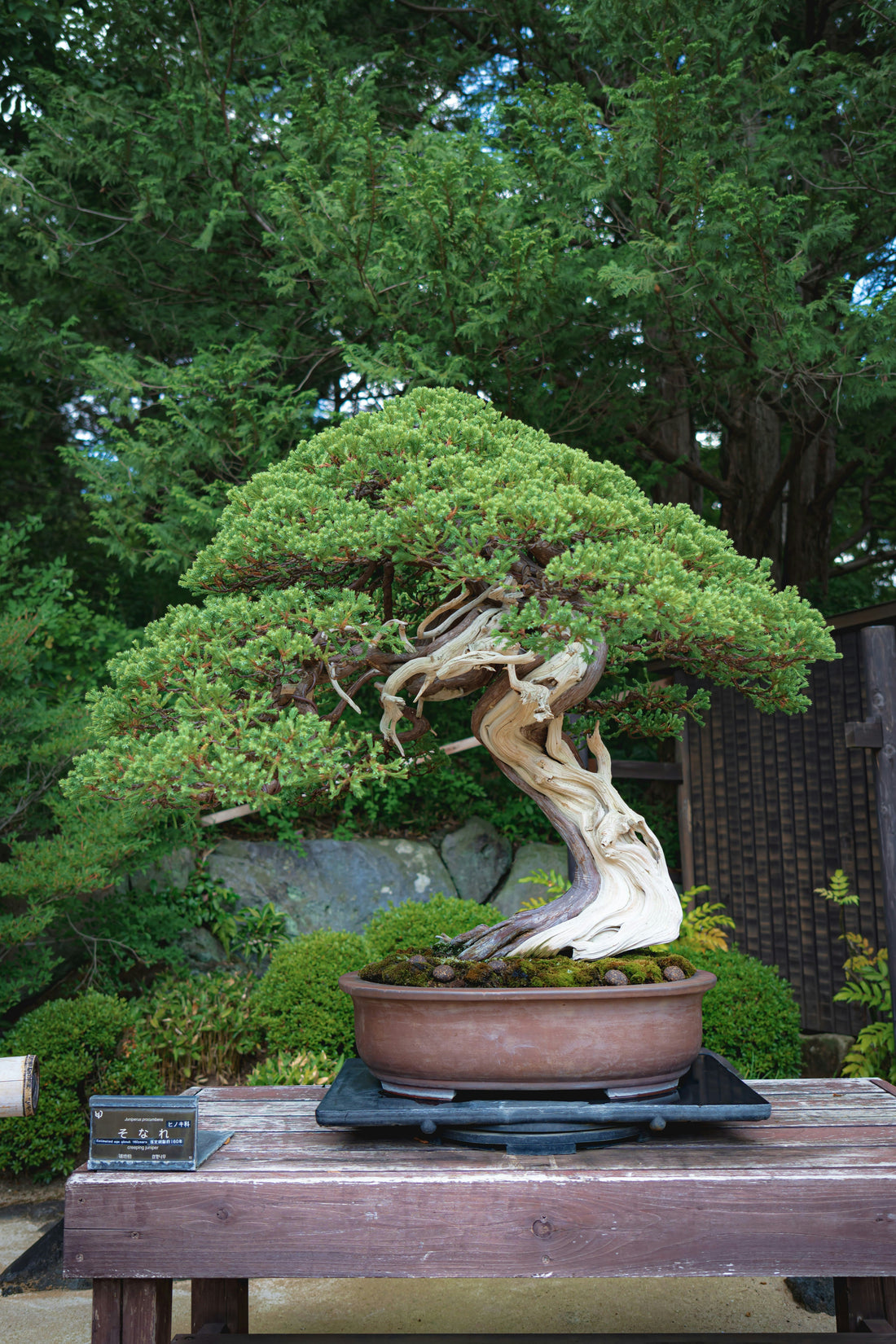Reading material
The History of Bonsai - A Living Art Developed in Japan

The History of Bonsai - A Living Art Developed in Japan
Bonsai is a traditional culture that symbolizes the aesthetic sense and spirituality of the Japanese people. Bonsai condenses the natural landscape into a small pot, reflecting the changing seasons and the passage of time. Today, "BONSAI" has become a universal word and is loved across borders. Tracing its history reveals how bonsai has progressed and been nurtured alongside Japanese culture.
Heian and Kamakura Periods: The Etiquette of Aristocrats and Samurai
Bonsai first appeared in Japanese literature at the end of the Heian period. Picture scrolls and documents depict potted trees, and it is clear that aristocrats of the time enjoyed them as room decorations. With the spread of Zen philosophy during the Kamakura period, bonsai spread to samurai and monks as a way to bring nature closer to them and to calm their minds. From this time on, bonsai began to take on the character of being not just about appreciating plants, but also as an art that reflects the soul.
Muromachi Period: The deepening of aesthetic sense and artistry
During the Muromachi period, bonsai came to symbolize the Japanese aesthetic sense, alongside gardening culture and the tea ceremony. Bonsai were displayed indoors alongside hanging scrolls and flowers, creating a tranquil, spiritual space. By expressing nature in miniature, bonsai reflects the four seasons and a sense of impermanence, and it was around this time that bonsai began its journey as a quintessential Japanese art form.
The Edo Period: Bonsai Spreads to Popular Culture
During the Edo period, bonsai quickly spread to the common people's culture. Plant markets were held in the large city of Edo, and samurai and townspeople alike began to enjoy bonsai. Conifers such as Japanese white pine and Japanese juniper were particularly popular, and were cherished as a "chic hobby."
Bonsai techniques also developed greatly during this period, with techniques such as pruning and wiring becoming more sophisticated. In addition to cultivating bonsai, the culture of displaying and displaying them also took root, and bonsai became established as a uniquely Japanese art form, along with the tea ceremony and flower arranging.
Modern Period: Establishment of Art
From the Meiji to Taisho periods, bonsai gained social recognition as an art. It was introduced at exhibitions and expositions, and was widely loved by the Imperial family and members of political and business circles. Pots and display stands also evolved as crafts, and bonsai developed into a comprehensive art form that allows the enjoyment of plants, containers, and space as a whole.
Bonsai also began to attract attention overseas from the Meiji period onwards, and the bonsai exhibited at international expositions captivated many people. Bonsai began to be promoted around the world as a representative of Japanese culture.
Modern times - Bonsai culture spreading around the world
From the postwar period to the present day, bonsai has seen great international growth. Since the 1970s, bonsai exhibitions have been held frequently in Europe and America, and today bonsai enthusiasts can be found all over the world, including in Asia, the Middle East, and Oceania.
The reason why bonsai is so highly acclaimed overseas is that it is more than just gardening; it is a "living art." The way it is cultivated over decades, even centuries, symbolizes the coexistence of humans and nature, and continues to fascinate people all over the world.
The future of bonsai culture
In modern times, new styles of bonsai have emerged that use flowering trees and herbaceous plants in addition to the traditional pine and juniper trees. Bonsai culture continues to evolve, with miniature bonsai to enjoy as interior decoration and collaborations with art pieces. However, the underlying spirit of "respecting nature and living in harmony with time" remains unchanged.
Bonsai will continue to be a symbol of Japanese culture and an art form loved all over the world.
BONGEN COFFEE | OFFICIAL SITE
https://ginza-bongen.jp/